If you've ever felt stuck cleaning messy data, wrestling with complex formulas, or just trying to create a quick chart in Excel, you're not alone. Spreadsheets can be powerful, but they often require manual, repetitive work. This is where Excel AI comes in.
This guide will walk you through what Excel AI is, how it works, and how you can start using it to save time and reduce errors, all in plain language.

What is Excel AI?
Excel AI refers to tools and features that let you use plain English to perform tasks like cleaning data, building formulas, running analysis, and creating charts. Instead of memorizing VLOOKUP or complex function chains, you can describe the task, such as: “Remove duplicates by ‘Order ID’, standardize ‘Date’ to YYYY-MM-DD, and calculate monthly sales.”
The tool translates your request into the necessary steps or formulas and applies them to your sheet. It complements your existing Excel skills by reducing setup time and handling much of the repetitive work involved in Excel automation. Excel AI doesn’t replace spreadsheet skills; it reduces setup time and repetitive steps so you can focus on decisions.
Why use it?
The main reason is to more efficiently handle common spreadsheet pain points. AI can help when you are:
- Facing messy data: It can help fix inconsistent date formats, fill in missing values, and remove duplicates, which is a core feature of AI data cleaning in Excel.
- Struggling with formulas: Instead of searching for the right syntax, you can describe the calculation you need and let an AI formula generator build it for you.
- Needing a quick visualization: You can ask for a specific chart based on your data without going through the manual chart setup steps.
Using AI reduces the trial-and-error often associated with complex spreadsheet tasks, allowing you to get to an answer faster.
Who is it for, and when to use it?
Excel AI is useful for a wide range of people, including office administrators, marketing teams, students, researchers, and small business owners.
Use AI when a task is repetitive (like cleaning a weekly report) or when you know what you want but aren't sure of the exact Excel steps. For very small, stable tasks where you already know the formula, typing it directly might still be faster. Think of AI as your assistant for the things that usually slow you down.
Where does it run?
Excel AI capabilities are available in a few different places:
- Browser-based platforms: Tools like Excelmatic operate in your browser. You upload a file (
.xlsx,.csv), perform the tasks, and download the cleaned or analyzed result. - Excel built-ins and add-ins: Microsoft’s Copilot in Excel (availability varies by license and region) and other add-ins integrate directly with the desktop or web app.
A Note on Verification and Privacy: Start with a small sample, spot-check 3-5 rows, confirm data types, and—when possible—ask the tool to show the steps or formulas it applied before running on the full sheet. Be mindful of data privacy by checking the tool's policy and avoiding highly sensitive data.
How to get started (A mini-workflow example)
Let's walk through a common scenario using a small sales table.
Sample Data:
| Order ID | Date | Category | Product | Price |
|---|---|---|---|---|
| 101 | 22-Jan-24 | Electronics | Laptop | 1200 |
| 102 | 23 Jan 2024 | Office Supply | Pens | 15 |
| 103 | 2024/02/05 | Electronics | Mouse | |
| 104 | 06-Feb 24 | Office Supply | Notebook | 20 |
| 102 | 23 Jan 2024 | Office Supply | Pens | 15 |
Step 1: Prepare Your Data Before using an AI tool, ensure your data has clear headers and no merged cells. Starting with a small sample of about 10-20 rows is a great way to test your instructions. Some tools impose row or file-size limits on free tiers—run your sample first to confirm behavior.
Step 2: Give Natural-Language Instructions Upload your sample file to a tool and enter your request. You can chain commands together. For instance:
- For cleaning: “ Remove duplicates by ‘Order ID’, fill missing ‘Price’ with the average of the same ‘Category’, and standardize all ‘Date’ formats to YYYY-MM-DD, give me the download link. ”

- For analysis: “create a column chart showing total sales by month."
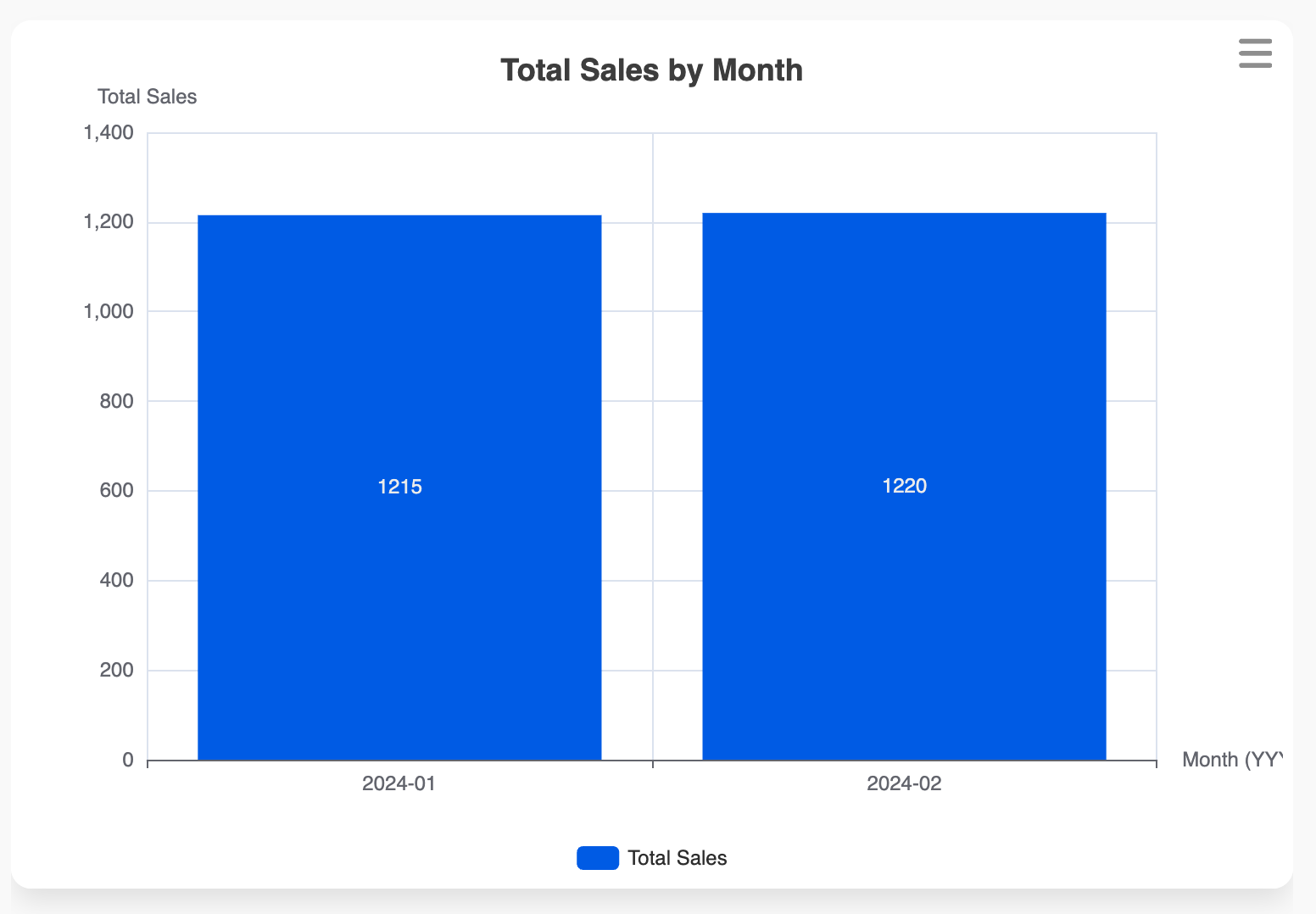
- For verification: After it processes, you can ask a follow-up question: “Explain the rules you used for deduplication and how you calculated the category average for ‘Price’.”
Step 3: Verify and Export Preview the changes, spot-check 3-5 rows, and ask the tool to show the steps or formulas it applied. If the sample looks right, run it on the full dataset and export to a new tab.
How much (Cost and Value)
Most third-party Excel AI tools operate on a subscription model, while some features are included in existing software suites like Microsoft 365. The true value lies in the time saved. You can estimate the return on investment (ROI) with a simple formula:
Weekly ROI = (Hours Saved per Week × Your Hourly Value) − Weekly Tool Cost
For example, if a tool costs $20/month (or $5/week) and saves you 5 hours of manual work, and you value your time at $25/hour, the calculation is: (5 hours × $25/hour) - $5 = $120 in net value gained per week.
Caveat: Always review outputs. AI can sometimes misinterpret column names or infer the wrong data type. A quick review is an essential final step.
Recommended Tools
Choosing the right tool depends on your primary needs.
1. Excelmatic: A good starting point for all-around use. It's a browser-based platform focused on making data work accessible to non-technical users.
A good starting point for all-around use. It's a browser-based platform focused on making data work accessible to non-technical users.
- What it does: Data cleaning, formula assistance, data analysis and charting, ability to convert image tables to Excel with Excelmatic, and a "chat with your data" feature.
- Who it's for: Busy professionals and beginners who want to get answers from their data without writing formulas.
- How to start: Follow a simple
upload → instruct → preview → exportworkflow. You can also see a step-by-step Excelmatic cleaning walkthrough.
2. Excel Built-in Tools (Analyze Data / Copilot):
If you are a Microsoft 365 subscriber, these tools are integrated directly into Excel.
- What they do: Offer quick, lightweight data analysis, chart suggestions, and formula help within your worksheet. Their features and availability vary by license and update channel.
- Who they're for: Microsoft 365 users who need quick suggestions or simple analysis without leaving Excel.
Focused AI Formula Generators:
These are specialized tools (often web-based) that do one thing: generate Excel formulas from a text description.
- What they do: Create correct
XLOOKUP,INDEX/MATCH,SUMIFS, and other complex formulas for you to copy and paste. - Who they're for: Users who are comfortable in Excel but just need help generating a specific, complex formula quickly.
Try Excelmatic with a sample file—upload, instruct, preview, export.
Top Excel AI Tools recommandation
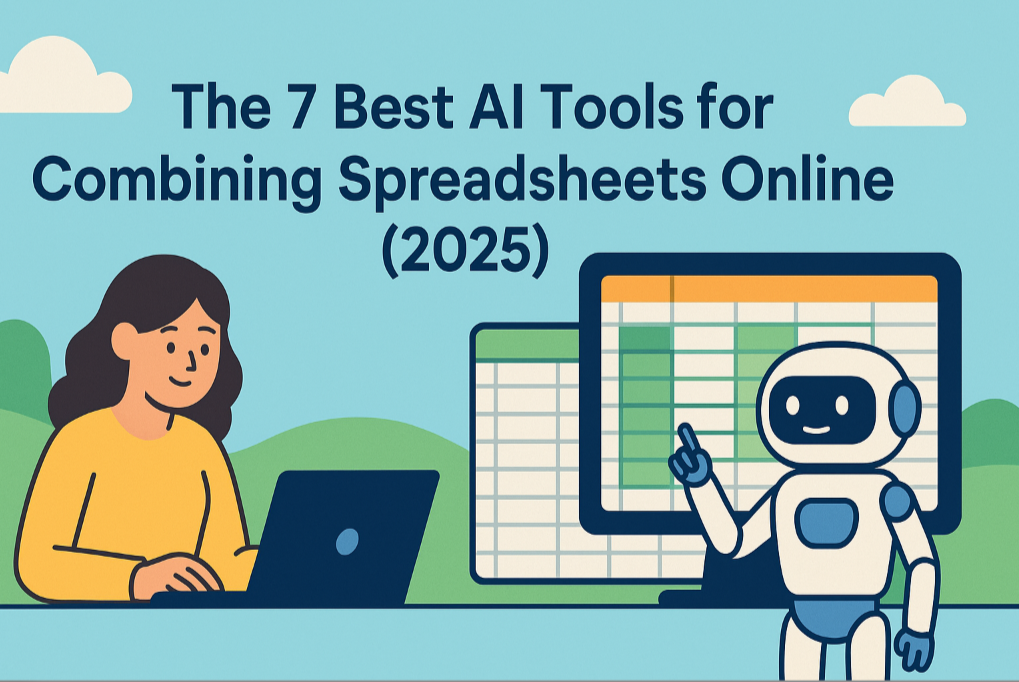 Top AI Tools
Top AI ToolsThe 7 Best AI Tools for Combining Spreadsheets Online
Manually merging spreadsheets is a nightmare of errors and wasted hours. This guide reviews 7 powerful AI tools, including free options, that can turn this tedious task into a simple, conversational command. Find the perfect fit for your workflow.
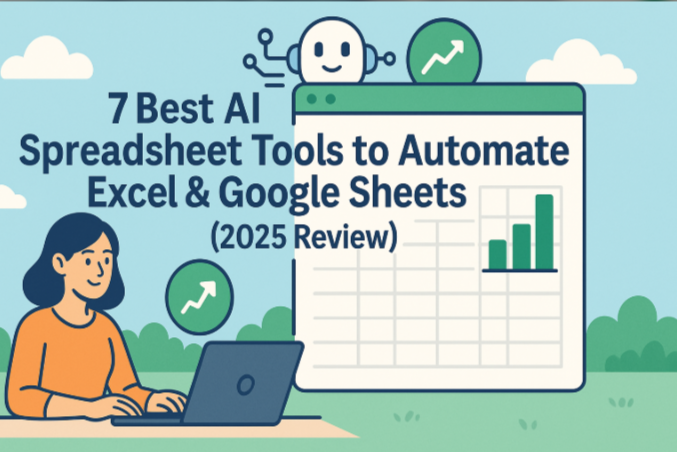 Top AI Tools
Top AI Tools7 Best AI Spreadsheet Tools to Automate Excel & Google Sheets (2025 Review)
Manual formulas are a thing of the past. This in-depth 2025 review covers the 7 best AI tools that do the heavy lifting for you, transforming tedious spreadsheet tasks into simple, conversational queries. See our top picks, including free options.
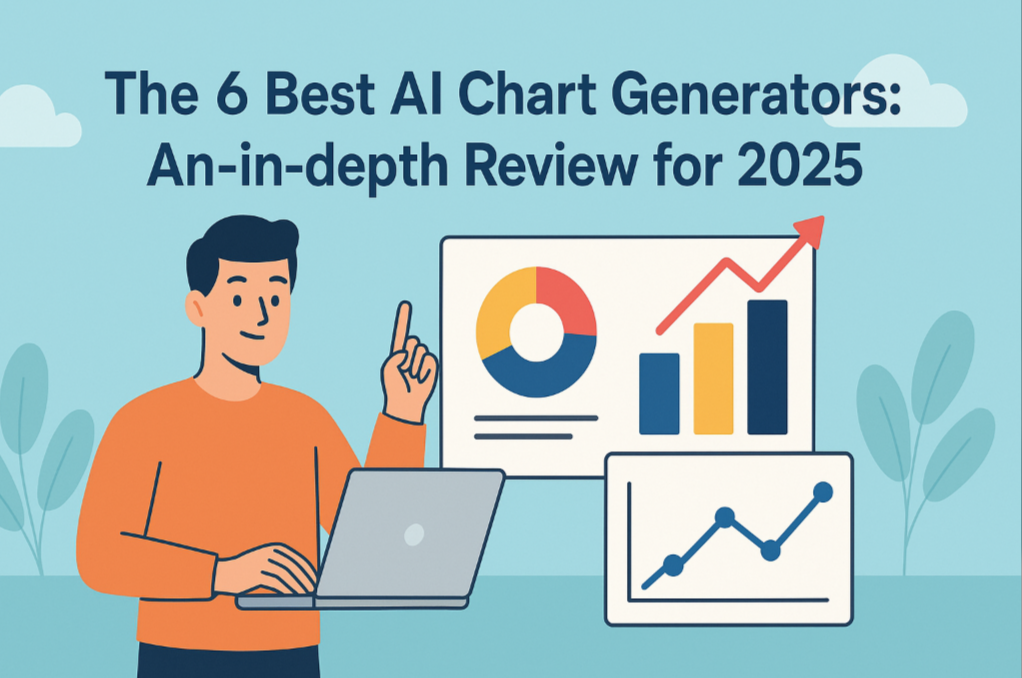 Data Visualization
Data VisualizationThe 6 Best AI Chart Generators: An In-depth Review for 2025
Manual chart creation is a major efficiency bottleneck. AI chart generators offer a powerful solution, creating stunning visualizations from simple text commands. This guide reviews the 6 best tools on the market, including Excelmatic and Copilot, to help you choose the perfect one and transform your workflow.
 AI Tools by Industry
AI Tools by IndustryTop AI Tools for Office Work in 2025: From Spreadsheet Chaos to Zen Productivity
Transform your office work in 2025 with AI tools that simplify spreadsheets, writing, meetings, and more.
 AI Tools by Industry
AI Tools by IndustryBest AI Tools for Accounting and Expense Management in 2025
Tired of messy spreadsheets, manual audits, and late reports? These 5 AI tools for accounting and expense management will save you time, catch errors, and bring peace to your monthly close.
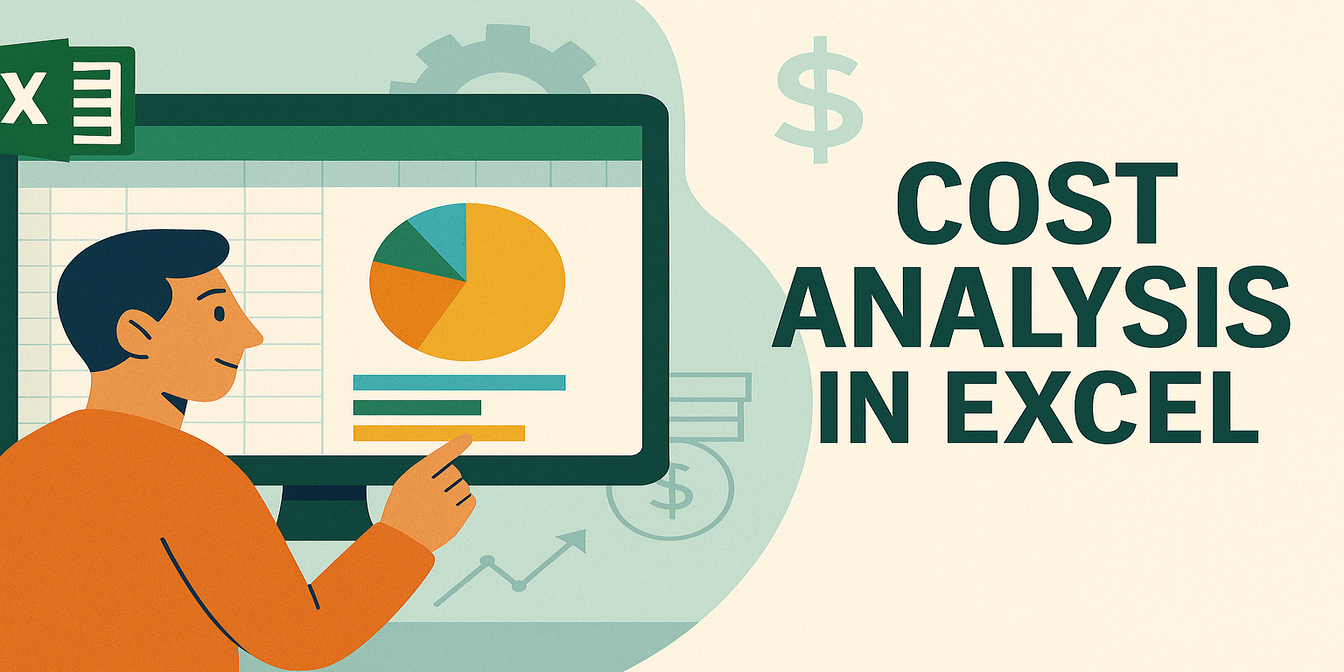 Excel Tips
Excel TipsMaster Cost Structure Analysis in Excel – No Formulas Needed
Still building pivots and charts to analyze your cost categories? Learn how Excelmatic uses AI to break down cost structures instantly and deliver insights you can act on.
 Excel Tips
Excel TipsTop 10 Excel AI Tools for Finance Teams in 2025
Discover 10 AI-powered tools that help finance teams use Excel smarter. Automate budgets, forecasts, dashboards, and analysis—no more wasting hours on manual work.
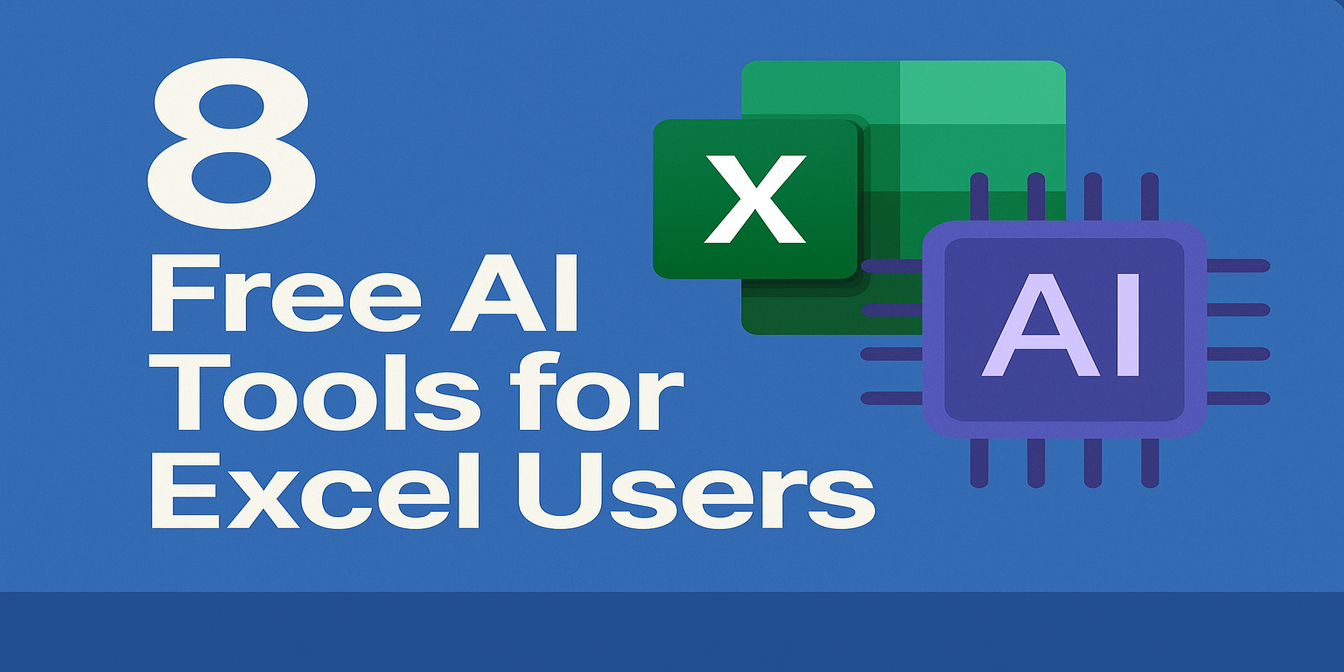 Excel Tips
Excel Tips8 Free AI Tools That Make Excel, Charts, and Reporting Easier
These 8 AI tools are free and practical — from cleaning messy spreadsheets to building beautiful charts and summaries.
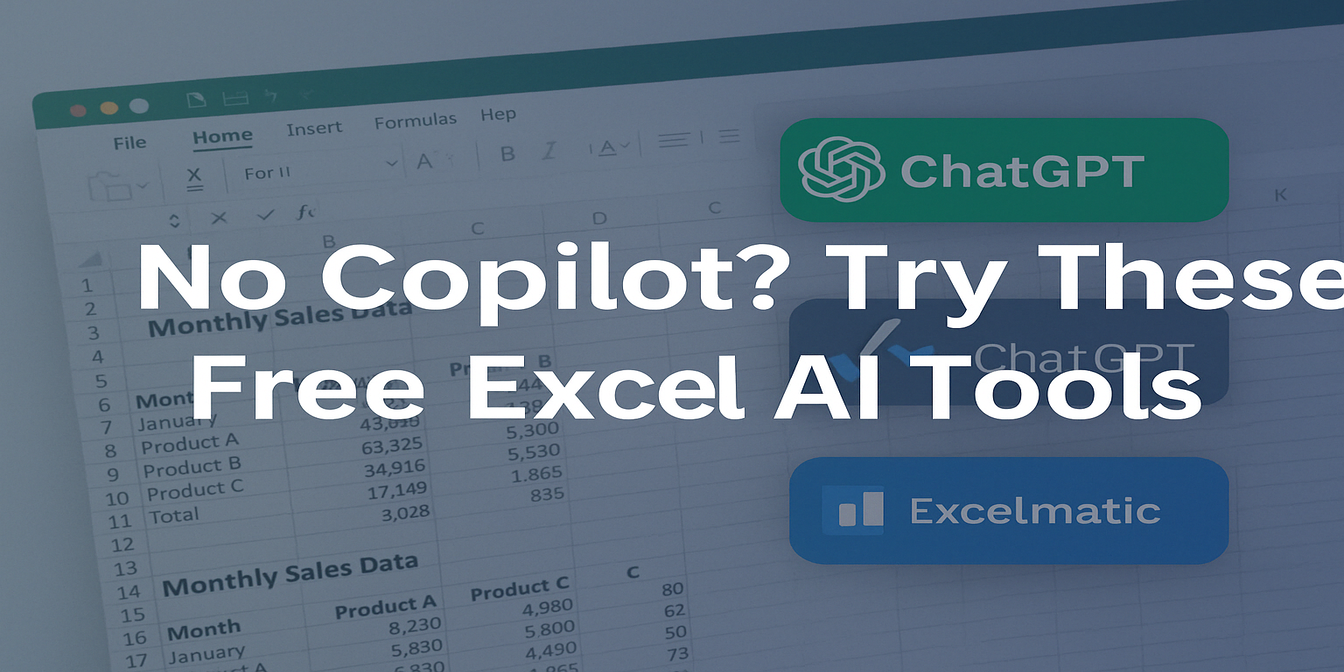 Excel Tips
Excel TipsNo Copilot? Try These Free Excel AI Tools Instead
Can’t access Copilot? Try these 4 free Excel AI tools that simplify your data tasks and help you work smarter.
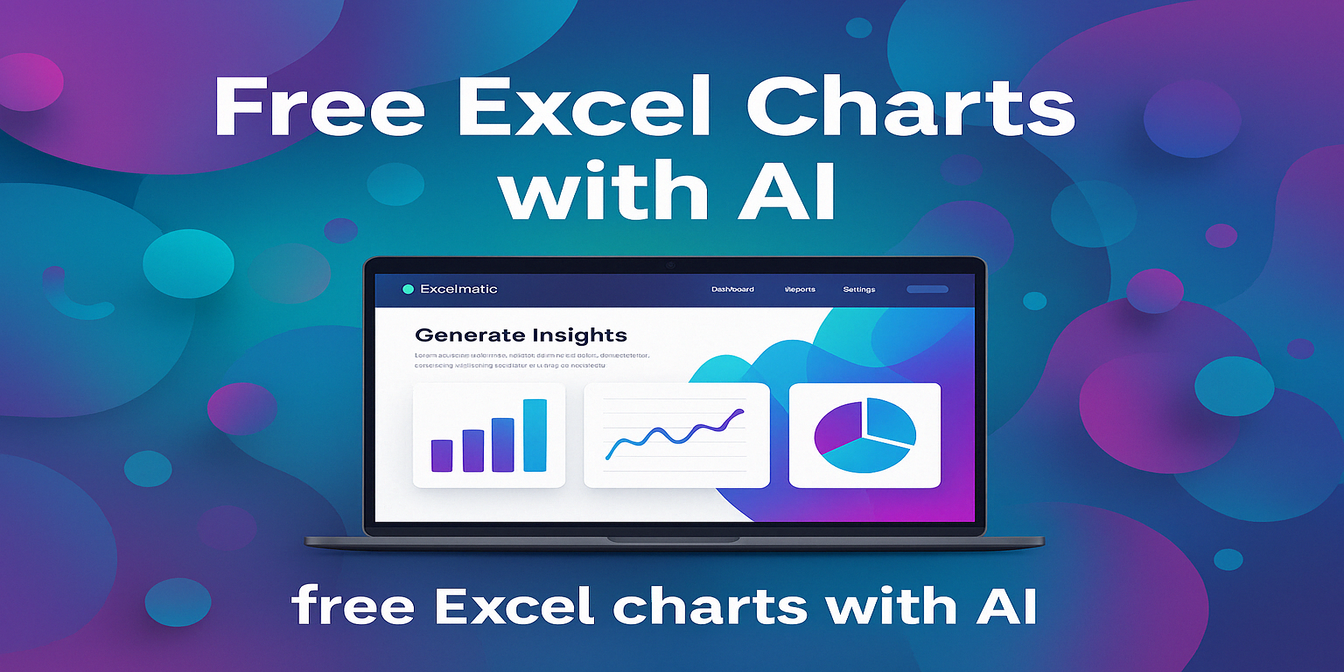 Excel Tips
Excel TipsThe Easiest Way to Make Excel Charts with AI (Free Download Inside)
Say goodbye to complex Excel chart templates. With Excelmatic’s AI, create professional bar, line, and pie charts in seconds using simple prompts—no coding or design experience required.
 Excel Tips
Excel TipsTop 10 Free AI Tools for Excel to Boost Your Productivity
Discover the top 10 free AI tools for Excel that can boost your productivity and simplify complex tasks.
 Excel Tips
Excel TipsUnleashing the power of AI in Excel: top 10 free and paid Excel AI tools for 2025
Here, we will explore the top 10 Excel AI tools available in 2025, focusing on their features, ideal user base, pros and cons, and pricing.
Frequently Asked Questions (FAQ)
1. Can Excel AI generate formulas for me? Yes. Tools like Excelmatic can generate and apply formulas based on your description, and dedicated AI formula generator websites can provide you with formula syntax to copy and paste into your sheet.
2. How do I use AI to standardize date formats in Excel? You can upload your file to an AI data cleaning tool and give a command like, "Standardize the 'Date' column to the format YYYY-MM-DD." The tool will identify the different formats (e.g., 'Jan 10, 2024', '10/01/2024') and unify them for you.
3. Is my data safe when using an AI tool? Reputable tools use secure connections and have clear privacy policies. However, it's a best practice to review a tool's security measures and avoid uploading data with highly sensitive personal, financial, or proprietary information.
4. When should I prefer a pivot table vs. AI analysis? Use a pivot table when you need structured, repeatable exploration and want to manually drag-and-drop fields to slice data. Use an AI tool when you have an ad-hoc question and want a fast answer, chart, or summary without the manual setup.
Other topics of Excel AI
 AI for Excel
AI for ExcelCan ChatGPT Create Excel Tables? Excelmatic Offers Better Solutions for Business Teams
Struggling with ChatGPT for Excel tables? Learn why business teams prefer Excelmatic, a specialized AI tool for seamless spreadsheet creation and data analysis.
 Excel Operation
Excel OperationTired of Manual Copy-Paste? Here's How to Combine 2 Columns in Excel in Seconds
Manually copying and pasting to combine Excel columns wastes valuable time. Discover formula techniques and AI tools that merge columns instantly, perfect for busy managers handling customer data or reports.
 Top AI Tools
Top AI ToolsThe 7 Best AI Tools for Combining Spreadsheets Online
Manually merging spreadsheets is a nightmare of errors and wasted hours. This guide reviews 7 powerful AI tools, including free options, that can turn this tedious task into a simple, conversational command. Find the perfect fit for your workflow.
 Top AI Tools
Top AI Tools7 Best AI Spreadsheet Tools to Automate Excel & Google Sheets (2025 Review)
Manual formulas are a thing of the past. This in-depth 2025 review covers the 7 best AI tools that do the heavy lifting for you, transforming tedious spreadsheet tasks into simple, conversational queries. See our top picks, including free options.
 Data Visualization
Data VisualizationThe 6 Best AI Chart Generators: An In-depth Review for 2025
Manual chart creation is a major efficiency bottleneck. AI chart generators offer a powerful solution, creating stunning visualizations from simple text commands. This guide reviews the 6 best tools on the market, including Excelmatic and Copilot, to help you choose the perfect one and transform your workflow.
 Data Visualization
Data VisualizationIs Your Marketing Spend Working? Find Clarity in 5 Minutes with One Scatter Plot
Don't just guess if your marketing spend is driving sales. This guide shows how to move beyond confusing Excel charts and use AI to create a scatter plot that gives you a clear, data-backed answer—including a simple explanation of what the numbers actually mean.
 Graph Maker
Graph MakerStill Manually Building Charts Before a Meeting? Visualize Your Data with a Single Sentence.
Stop wasting time on manual chart creation. This guide shows how Excelmatic, an AI graph maker, replaces complex Excel steps with one command. Instantly turn raw data into insightful charts and focus on the story behind your data.
 Data Analytics
Data AnalyticsGoodbye, VLOOKUP: Find and Extract Data from Thousands of Rows with One Sentence
Stop wasting time on complex VLOOKUP formulas. Excelmatic lets you find information in spreadsheets just by asking a question in plain English, like "Find the name and grades for student ID 102." Our AI understands, locates the data, and gives you a precise answer in seconds.
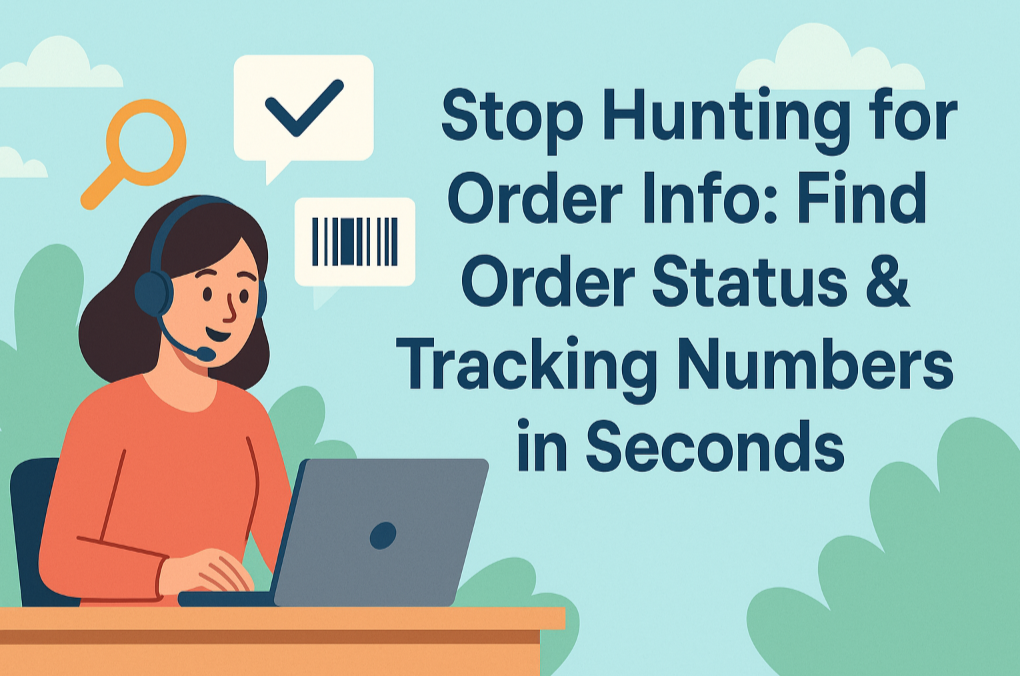 Data Analytics
Data AnalyticsStop Hunting for Order Info: Find Order Status & Tracking Numbers in Seconds
A customer asks, "Where's my order?" and the frantic search begins. But what if you could just ask your spreadsheet the same question? Excelmatic turns your order list into a conversational assistant. Find any order's status, tracking number, and shipping date in seconds, just by asking.
 Data Analytics
Data AnalyticsStop Manually Filtering: Calculate Top N Averages in One Sentence
Finding the average for your top-performing products or regions shouldn't be a multi-step nightmare of filtering and formulas. This guide reveals how a simple AI prompt can replace complex Excel workflows, allowing you to instantly calculate averages for any 'Top N' or specific data subset, so you can focus on what the numbers mean.
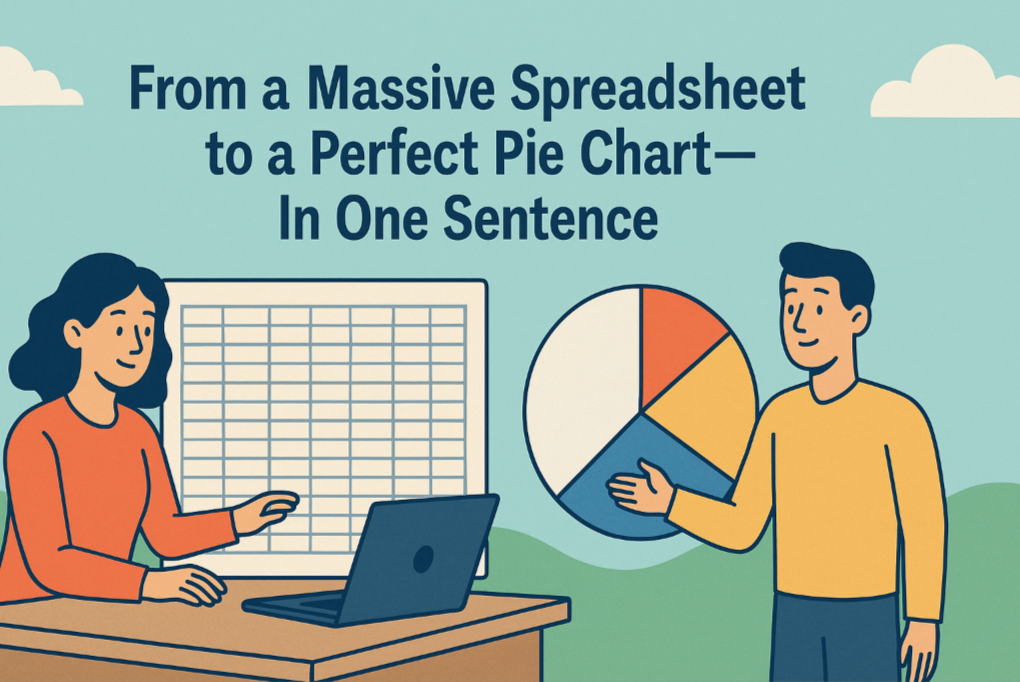 Data Visualization
Data VisualizationFrom a Massive Spreadsheet to a Perfect Pie Chart—In One Sentence
Need to show a breakdown of your sales data but dread the multi-step Excel process? This guide shows you how to use a simple AI command to instantly filter massive datasets and generate a clear, accurate pie chart, freeing you up to focus on insights, not clicks.
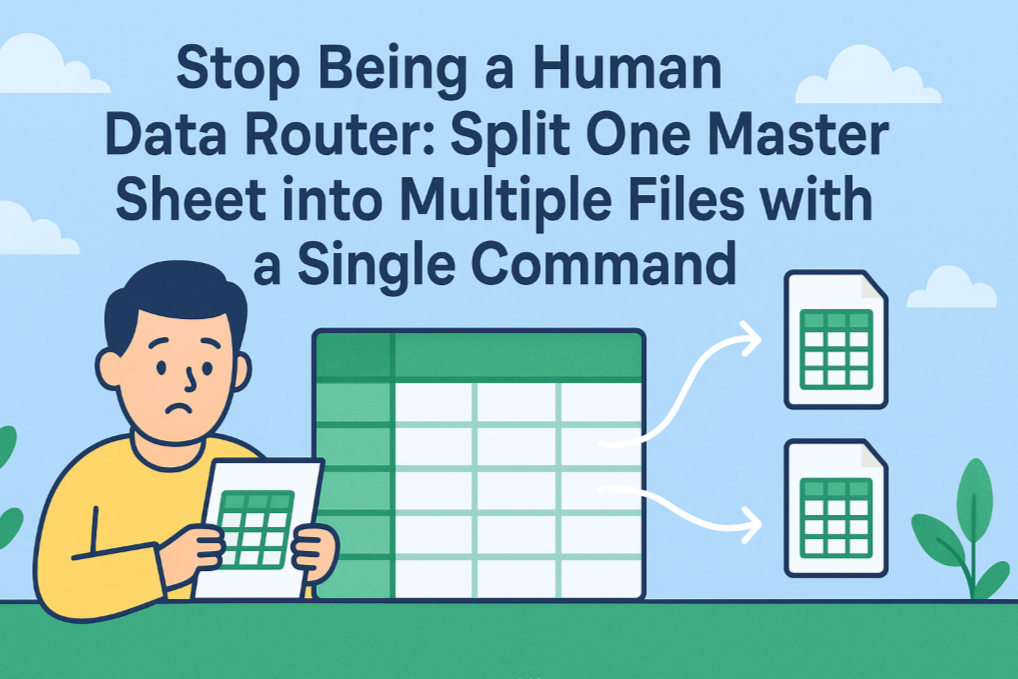 Data Visualization
Data VisualizationStop Being a Human Data Router: Split One Master Sheet into Multiple Files with a Single Command
That feeling of dread when you see a master spreadsheet that needs to be split into 30+ individual files? We know it. It's a soul-crushing afternoon of copy-pasting. But what if it could take less than a minute? This guide reveals the one command in Excelmatic that automates it all.
 Data Analytics
Data AnalyticsIs Your Chart Just a Pretty Picture? How Excelmatic's AI Analyzes Trends for You
Your line chart looks great, but what does it really mean? When asked for the exact growth rate or next quarter's forecast, most people freeze. This article shows how Excelmatic's AI acts as your personal data analyst, answering those tough questions for you. Learn to turn your static charts into dynamic insights with a single command.
 Excel Merging
Excel MergingStop Playing "Excel Tetris": How to Merge All Your Spreadsheets with a Single Sentence
It's the end of the month, and you're facing a folder of 50 sales reports that need to be one. Before you start the soul-crushing copy-paste marathon, read this. This post shows how Excelmatic’s AI can merge all those files—even with mismatched columns—with a single sentence. See real examples and reclaim hours of your time.
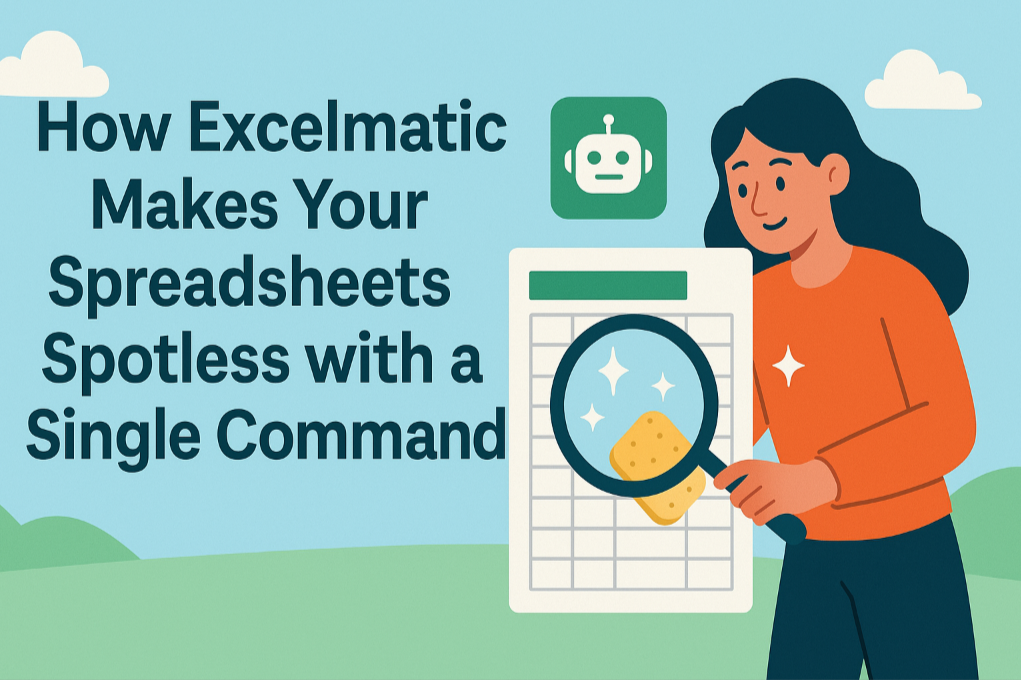 Data Visualization
Data VisualizationStill Cleaning Data Manually? How Excelmatic Makes Your Spreadsheets Spotless with a Single Command
Does 80% of your data work involve fixing inconsistent formats, deleting duplicate rows, and filling in blank cells? This post reveals how Excelmatic's conversational AI can automate these tedious data cleaning tasks with a single sentence. We'll walk you through real-world scenarios showing how you can get a perfectly clean dataset in minutes, not hours. It's time to fire your inner data janitor.
 Data Visualization
Data VisualizationStop Building Charts Manually: How Excelmatic Turns Spreadsheets into Interactive Visuals with a Single Sentence
What if you could turn a boring spreadsheet into a dynamic, interactive chart just by typing a single sentence? This post reveals how Excelmatic's conversational AI does exactly that. We'll show you real-world examples of how teams are saving hours of manual work and creating reports that actually impress. Get ready to stop clicking and start talking to your data.
 Data Visualization
Data VisualizationData Insight: Is Your 'Hustle Culture' Silently Killing Innovation?
As a leader, you see execution soaring while innovation stalls. The problem is disconnected data. Learn how Excelmatic merges HR and product metrics, turning your strategic intuition into powerful visual evidence and driving smarter, sustainable growth.
 Data Visualization
Data VisualizationHow To Create a Combo Chart with AI in Seconds, Not Hours in Excel
Tired of Excel's multi-step process for creating combo charts? This guide shows you how to use AI to generate a professional column and line chart with a single command. Turn your data into clear insights for your next business report.
 Excel Merging
Excel MergingWho Said You Need Excel Formulas? AI Merges Multiple Files in One Second!
Whether you are an enterprise manager summarizing data from various departments, or a financial staff integrating multiple reports, as long as you have the need to process data, AI can be a great partner to help you work more efficiently.
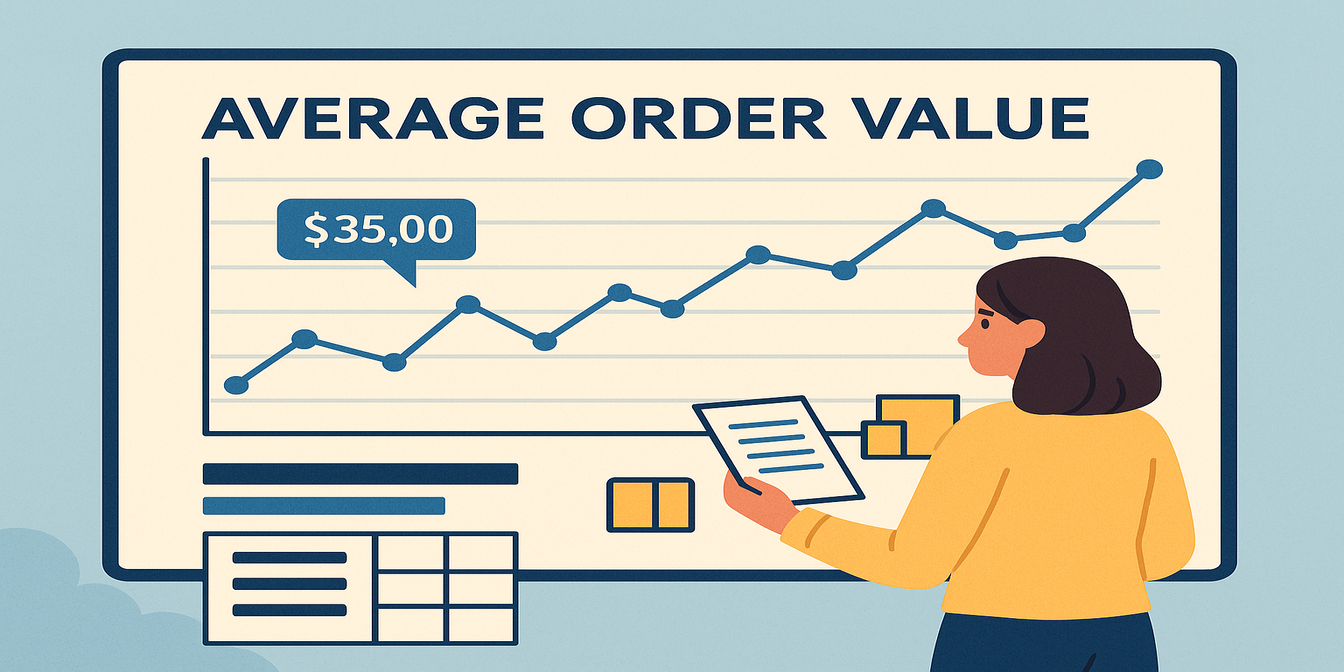 Data Visualization
Data VisualizationTrack Your Average Order Value with Excel AI Line Charts
Wondering if customers are spending more per order? Use Excel AI to track average order value (AOV) with clean, automated line charts that reveal the story behind your revenue.
 Data Visualization
Data VisualizationCompare Seasonal Sales Trends with Multi-Line Excel AI Charts
Track sales across multiple years and reveal your seasonality trends with just one Excel AI prompt. Excelmatic makes comparing monthly sales easy and accurate.
 Excel Tips
Excel TipsSmarter E-commerce Analytics with Excel AI: From Data Chaos to Clear Insights
Skip the formulas. Excelmatic makes e-commerce analysis instant and visual—just ask your data.
 Data Visualization
Data VisualizationVisualize Category Sales by Region with Donut Charts in Excel AI
Want to show regional sales and category distribution in one chart? Excel AI donut charts let you visualize multiple layers of insight in a beautiful, interactive way.
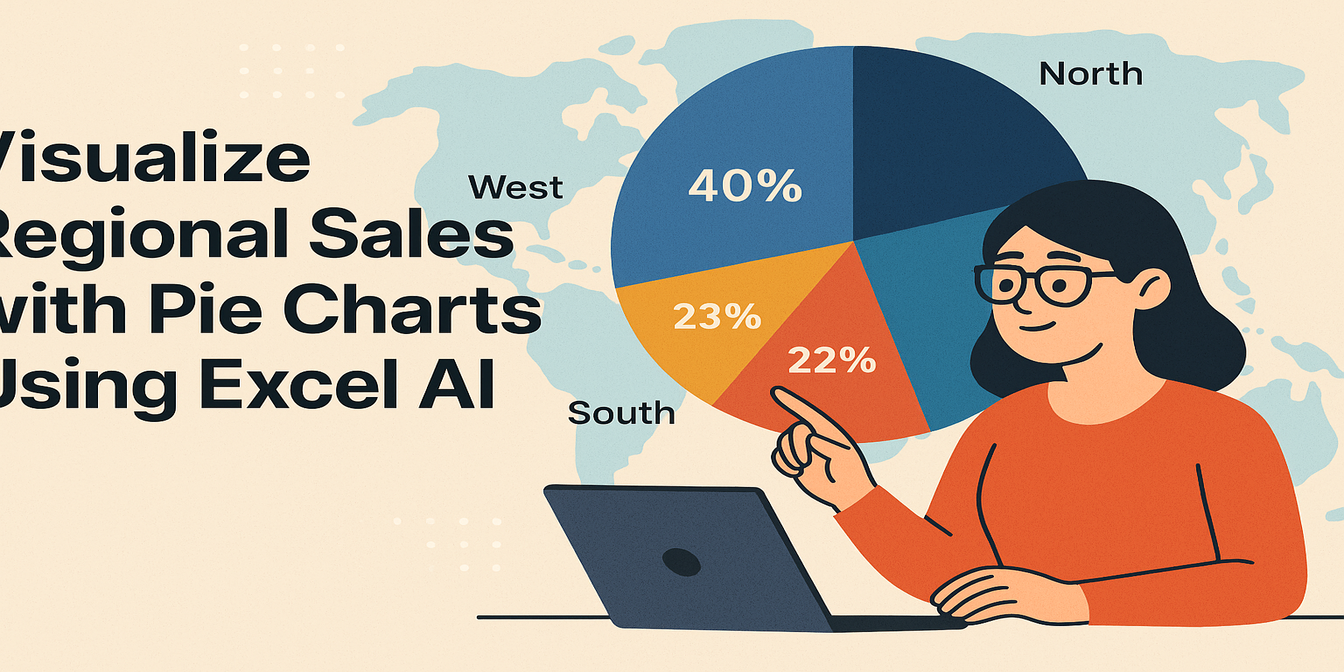 Data Visualization
Data VisualizationVisualize Regional Sales with Pie Chart Using Excel AI
Want to know which region brings in the most revenue? Use Excel AI to generate Pie Chart that make your sales distribution crystal clear—no pivots, no pain.
 Excel Tips
Excel TipsCategory Comparison Charts Made Simple: Excel AI Magic with Excelmatic
Turn spreadsheet categories into clear comparisons with Excelmatic and save hours of manual work.
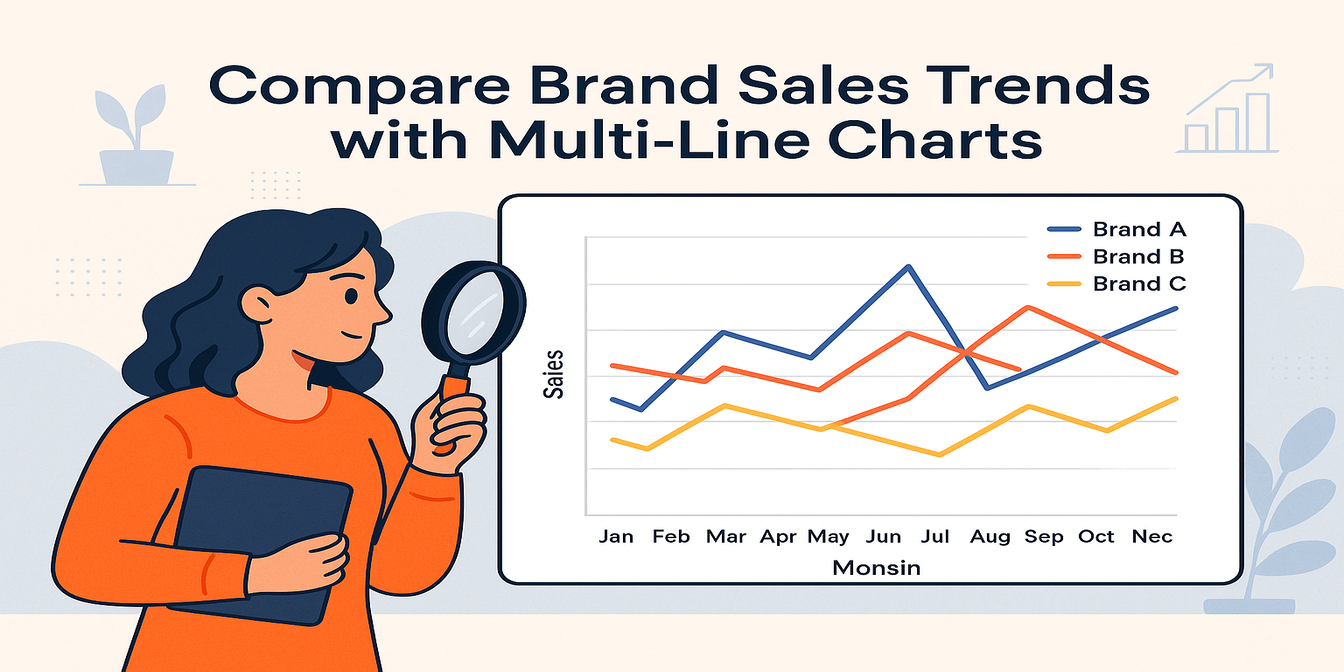 Data Visualization
Data VisualizationCompare Brand Sales Trends with Multi-Line Charts in Excel AI
Want to track your brand against competitors over time? Multi-line charts in Excel AI let you compare monthly sales trends instantly—no formulas, no formatting headaches.
 Data Visualization
Data VisualizationCompare Ad Channel Sales with a Bar Chart in Excel AI
Tired of guessing which ad channel works best? Let Excel AI generate Bar Charts comparing Facebook, Google, TikTok, and more—instantly and insightfully.
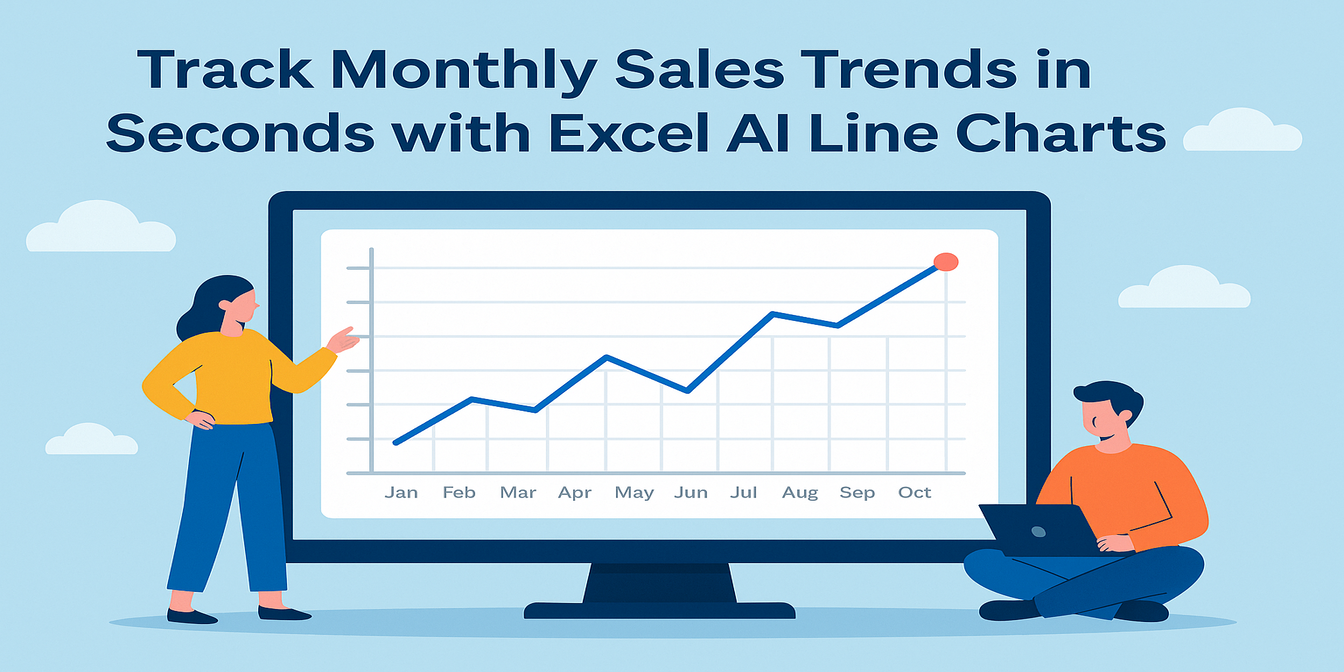 Data Visualization
Data VisualizationTrack Monthly Sales Trends in Seconds with Excel AI Line Charts
Ditch manual work and discover how Excel AI tools like Excelmatic can create dynamic, trend-focused line charts from your raw data. Analyze monthly changes with zero stress.
 Data Visualization
Data VisualizationVisualize Your E-commerce Category Sales with a Pie Chart
Stop wasting time building charts manually. Discover how Excel AI can generate clean, insightful pie charts from your data with just one simple prompt.
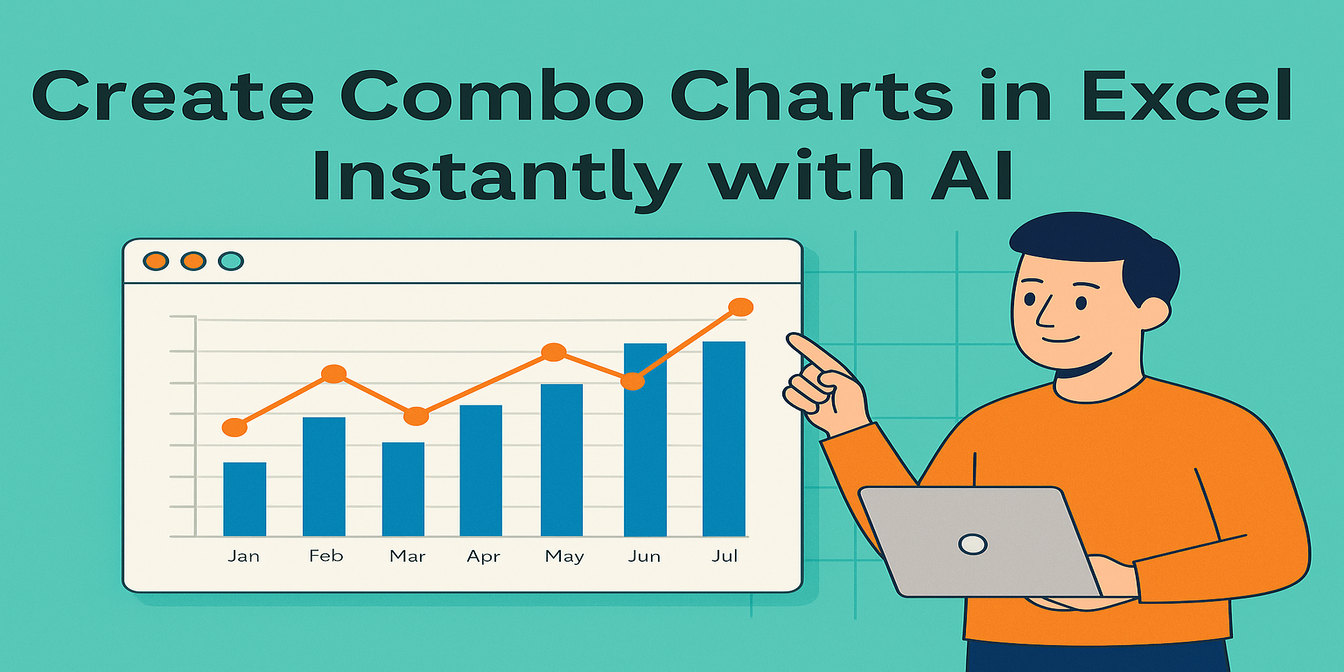 Data Visualization
Data VisualizationCreate Combo Charts in Excel Instantly with AI: Sales + KPIs in One View
Combine sales and profit metrics in one clear Excel chart—Excel AI tools like Excelmatic make combo charts effortless and beautiful.
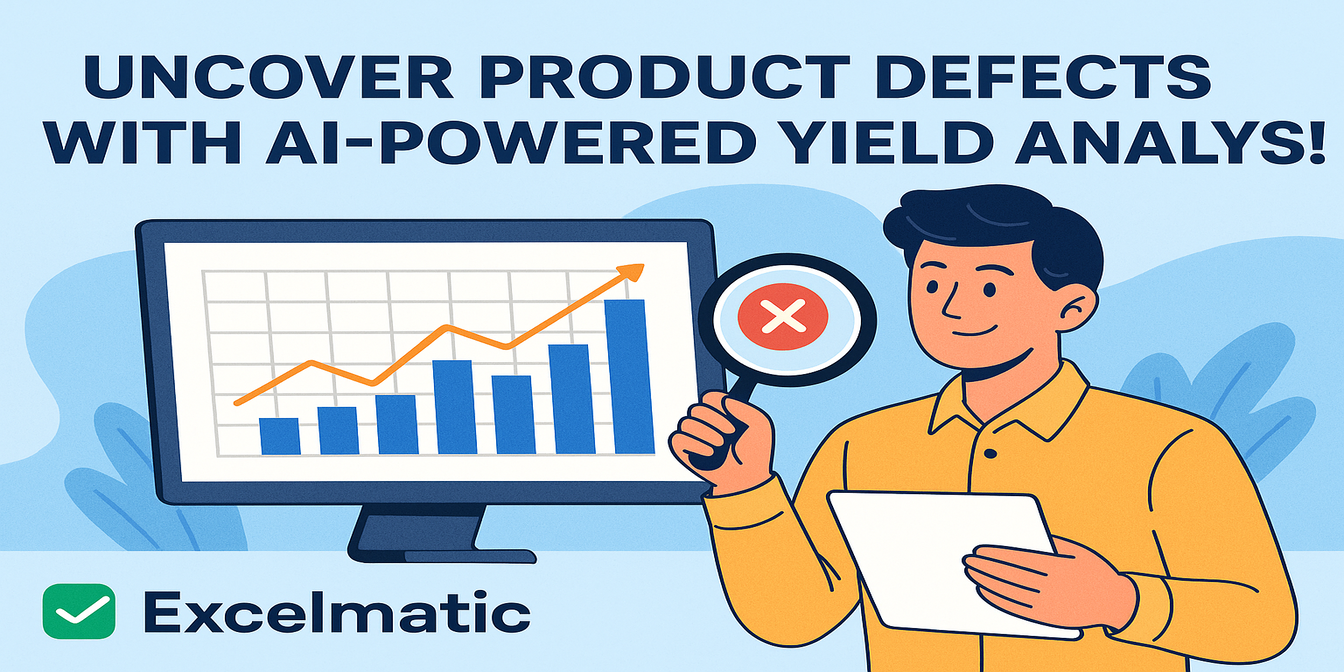 Excel Tips
Excel TipsYield Analysis: Uncover product defects with one smart question!
Yield insights don’t have to be hidden. With Excelmatic, they surface in seconds.
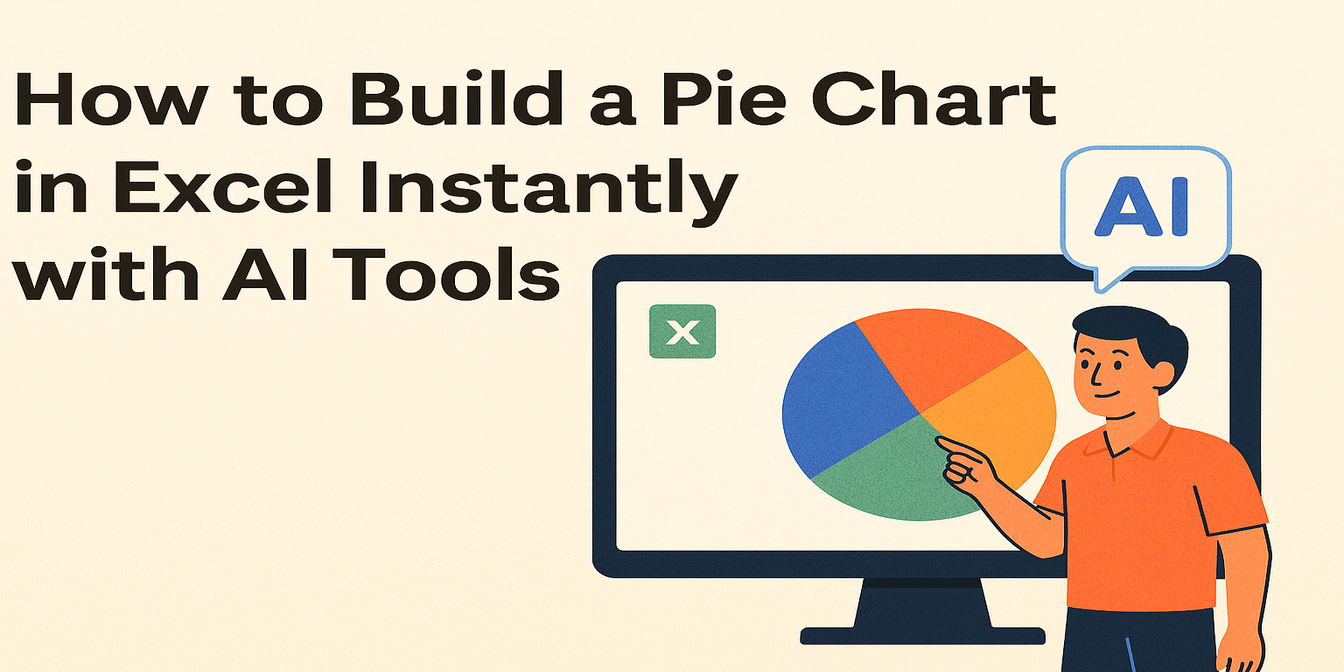 Data Visualization
Data VisualizationHow to Create a Line Chart Instantly Using Excel AI Tools
Forget manual formatting—learn how Excel AI can create clear, clean line charts in one simple step.
 AI Tools by Industry
AI Tools by IndustryTop AI Tools for Office Work in 2025: From Spreadsheet Chaos to Zen Productivity
Transform your office work in 2025 with AI tools that simplify spreadsheets, writing, meetings, and more.
 Excel Tips
Excel TipsExcel Grade Analysis Made Simple: Visualize Student Performance with Excel AI
Excelmatic turns clunky grade spreadsheets into smart visual dashboards—no formulas, just plain English.
 AI Tools by Industry
AI Tools by IndustryBest AI Tools for Accounting and Expense Management in 2025
Tired of messy spreadsheets, manual audits, and late reports? These 5 AI tools for accounting and expense management will save you time, catch errors, and bring peace to your monthly close.
 Excel Tips
Excel TipsTrack Sales KPIs Smarter: How Excel AI Tools Simplify Performance Analysis
Still tracking KPIs with manual formulas and pivot tables? Learn how Excelmatic makes sales performance analysis faster, simpler, and more accurate—no coding required.
 Excel Tips
Excel TipsMaster Cost Structure Analysis in Excel – No Formulas Needed
Still building pivots and charts to analyze your cost categories? Learn how Excelmatic uses AI to break down cost structures instantly and deliver insights you can act on.
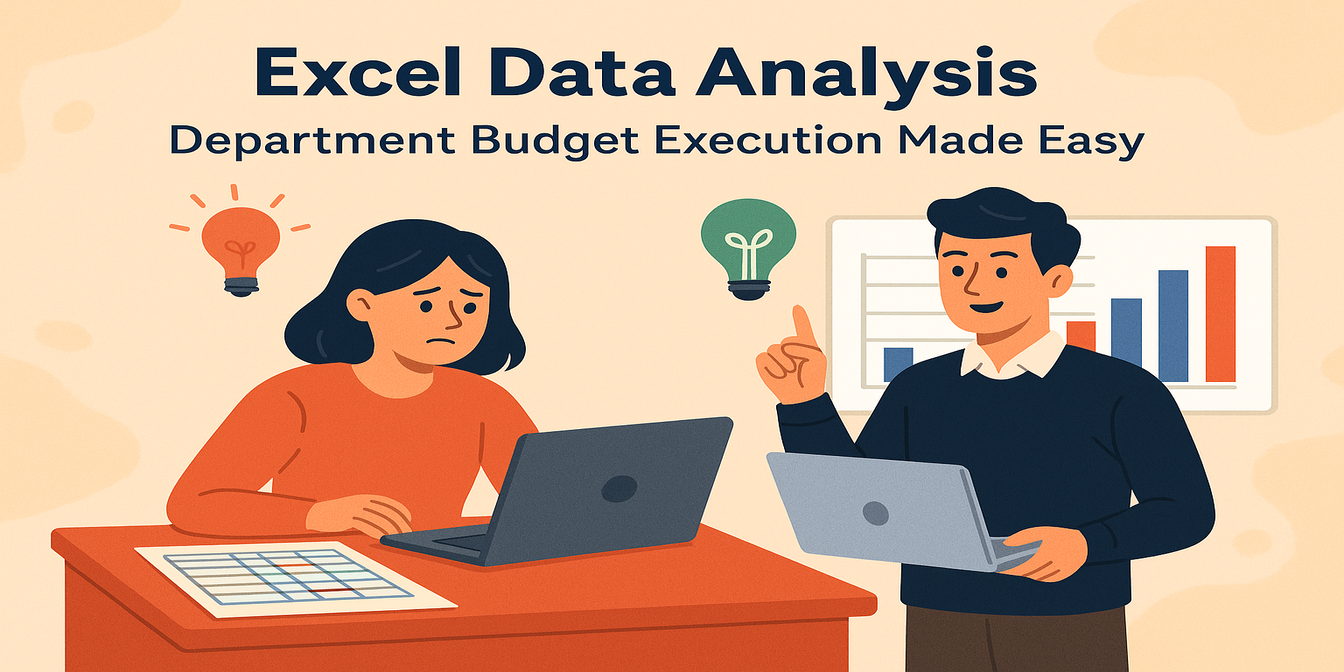 Excel Tips
Excel TipsBudget Execution Made Simple: Excelmatic Transforms Departmental Analysis
Excelmatic makes budget execution easy—skip the formulas and pivots, just ask your questions in plain English and get analysis-ready insights.
 Excel Tips
Excel TipsTop 10 Excel AI Tools for Finance Teams in 2025
Discover 10 AI-powered tools that help finance teams use Excel smarter. Automate budgets, forecasts, dashboards, and analysis—no more wasting hours on manual work.
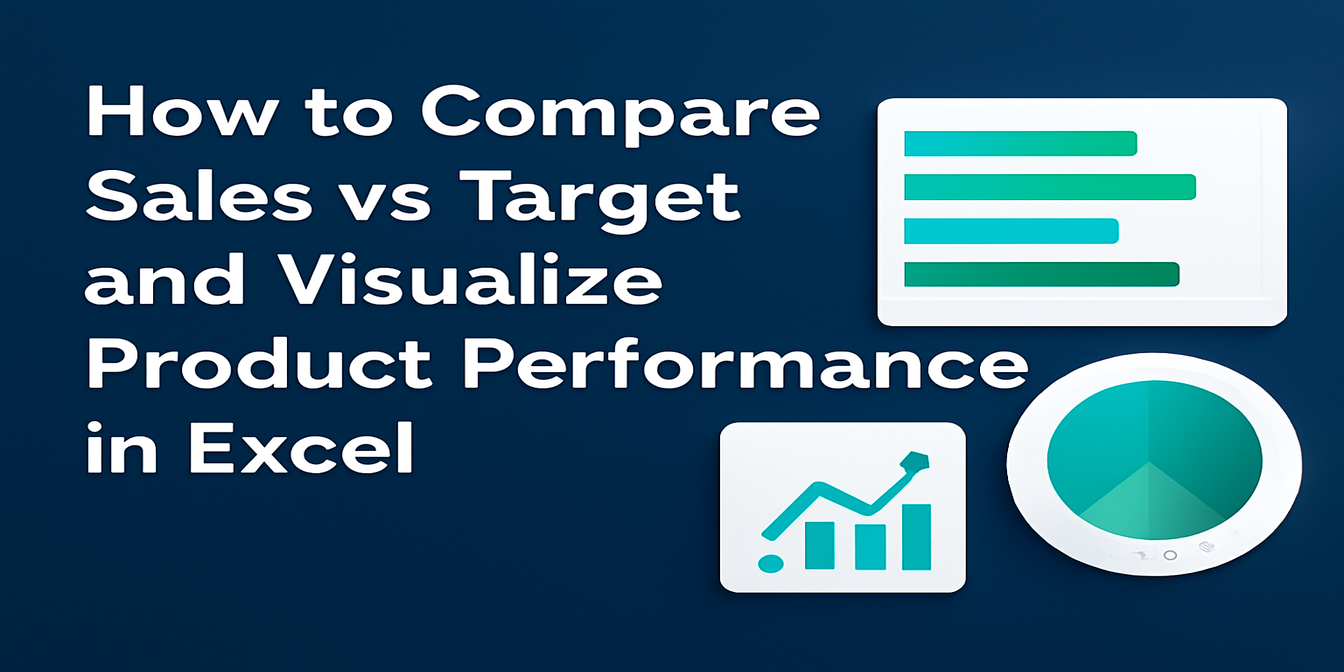 Excel Tips
Excel TipsHow to Compare Sales vs Target and Visualize Product Performance in Excel
Compare actual vs target sales and visualize product performance in Excel using Excelmatic. Generate charts, calculate revenue ratios, and identify sales gaps easily.
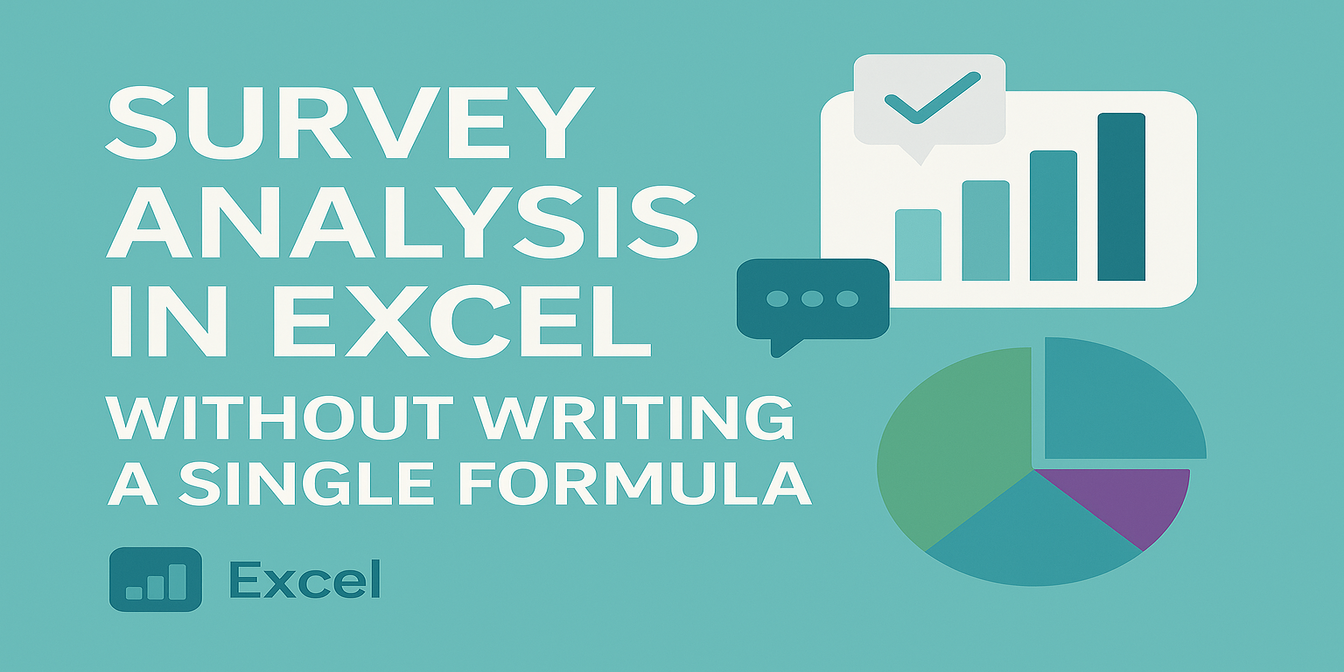 Excel Tips
Excel TipsHow to Analyze Survey Data in Excel Without Writing a Single Formula
Turn raw survey feedback into visual dashboards and key insights without a single formula. Here's how to analyze survey results in Excel the smart way.
 Excel Tips
Excel TipsExcel Analysis for Attendance: Solve HR Check-in Data with Just 3 Smart Questions
Struggling with Excel-based attendance tracking? Learn how Excelmatic helps HR professionals get instant insights into attendance rate, late arrivals, and department summaries—without writing a single formula.
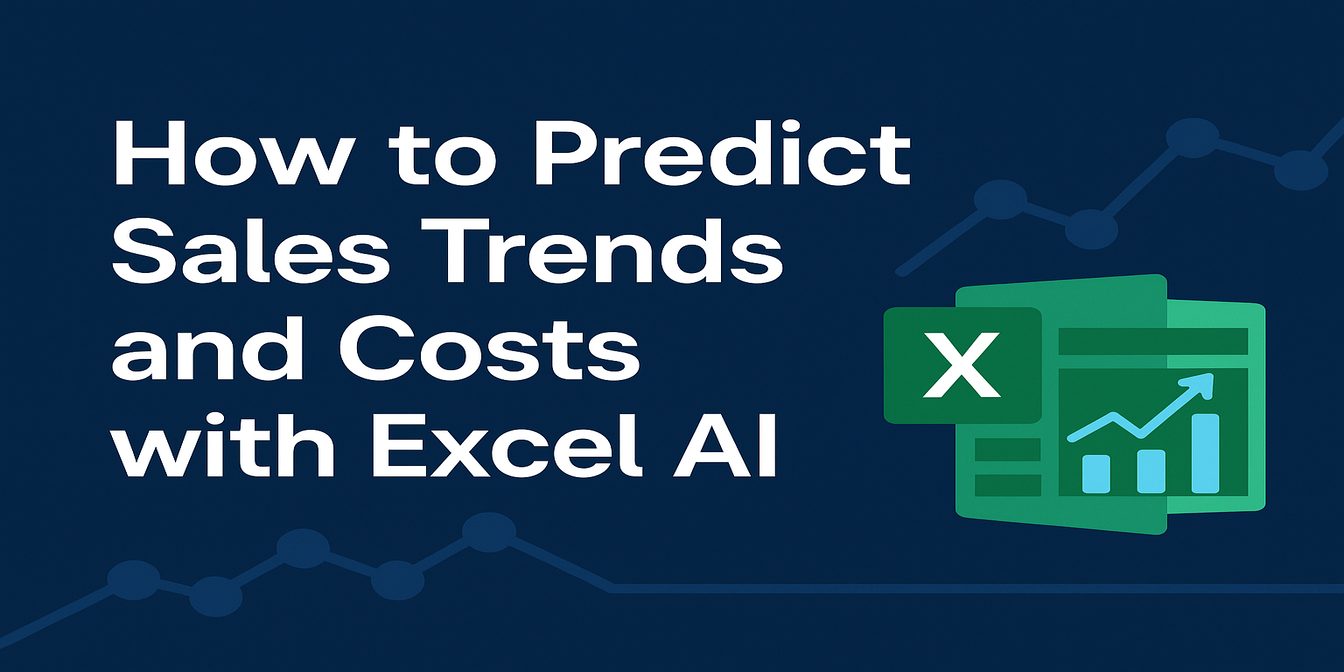 AI for Excel
AI for ExcelHow to Predict Sales Trends and Costs with Excel AI — No Formulas Needed
Stop struggling with complex Excel formulas for trend prediction. Discover how I use Excelmatic to predict sales and simulate scenarios — all with a simple prompt.
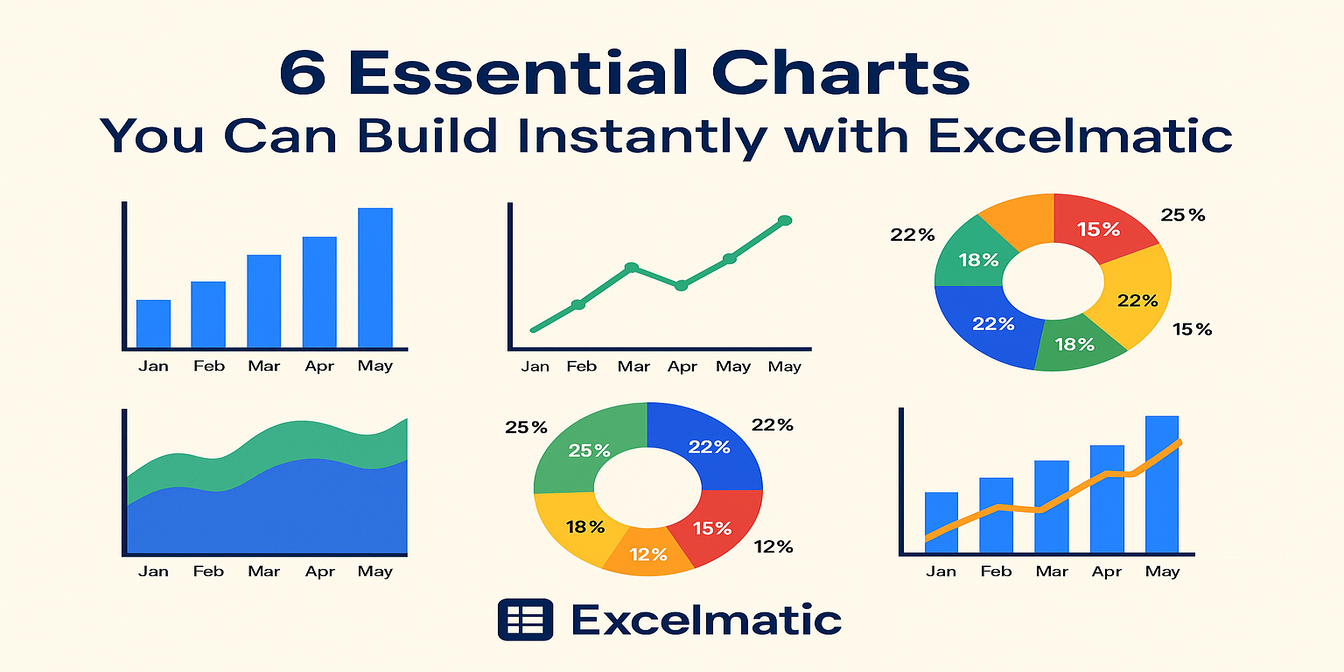 Excel Tips
Excel Tips6 Essential Charts You Can Build Instantly with Excelmatic
Learn how I use Excelmatic to instantly create 6 powerful chart types from Excel tables — no formatting, no formulas, no stress.
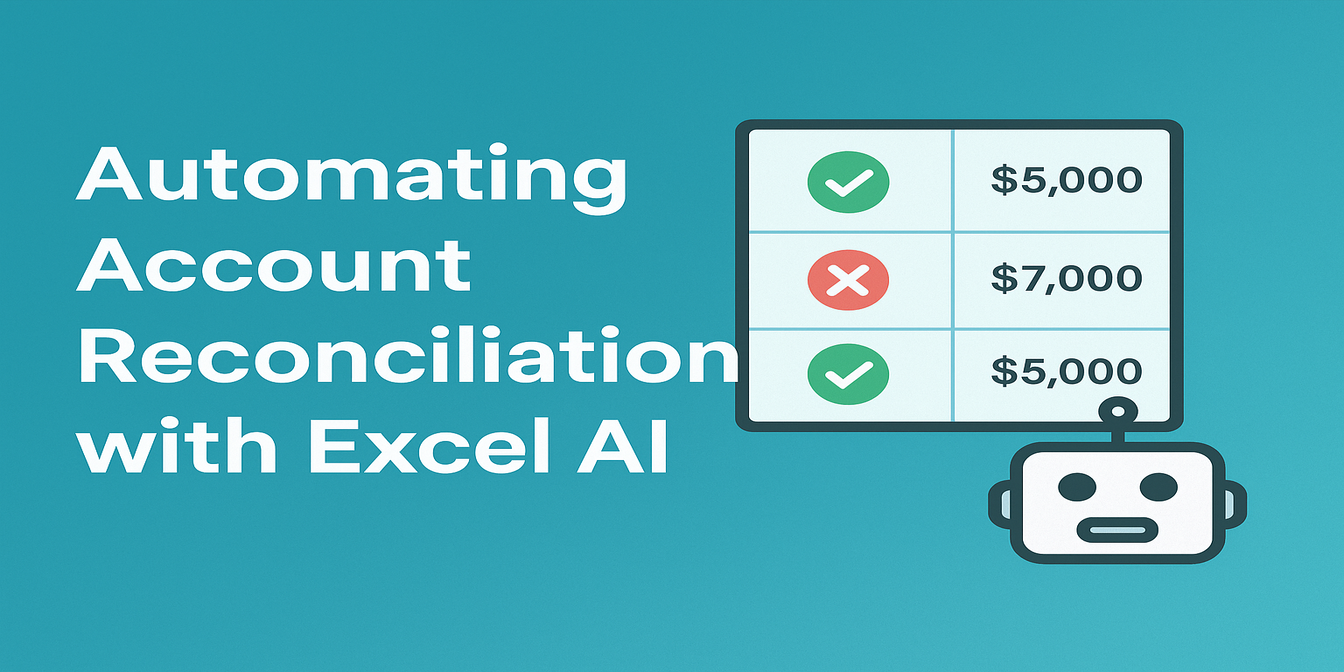 AI for Excel
AI for ExcelHow I Reconcile Financial Records Faster with Excel AI — No More Manual Matching
Still reconciling finance data by hand? Discover how Excelmatic helps me find mismatches and errors in minutes — no VLOOKUP, no stress.
 AI for Excel
AI for ExcelHow I Compare Budget vs Actual Spending with Excel AI — No Manual Calculations
Stop wasting hours on budget analysis. Learn how Excelmatic helps me calculate variances, detect overspending, and visualize results instantly.
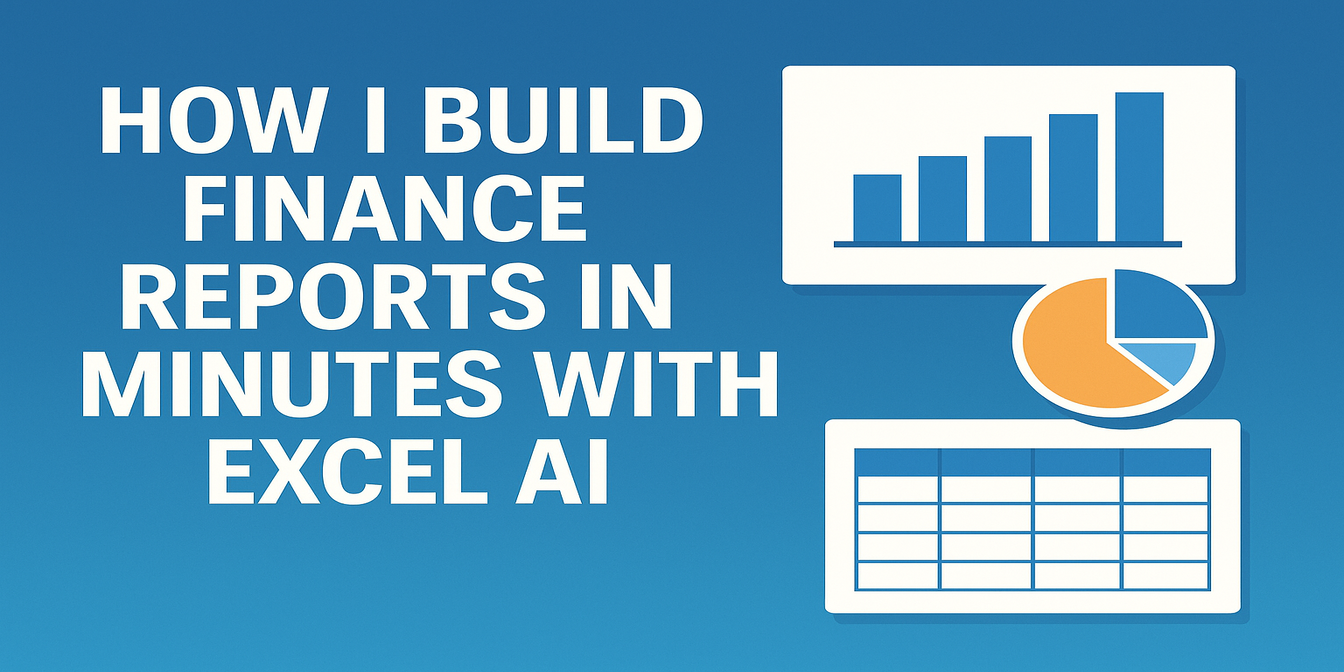 AI for Excel
AI for ExcelHow I Build Finance Reports in Minutes with Excel AI
Still building finance reports manually? Discover how Excelmatic helps me merge, summarize, and visualize department budgets — in under 2 minutes.
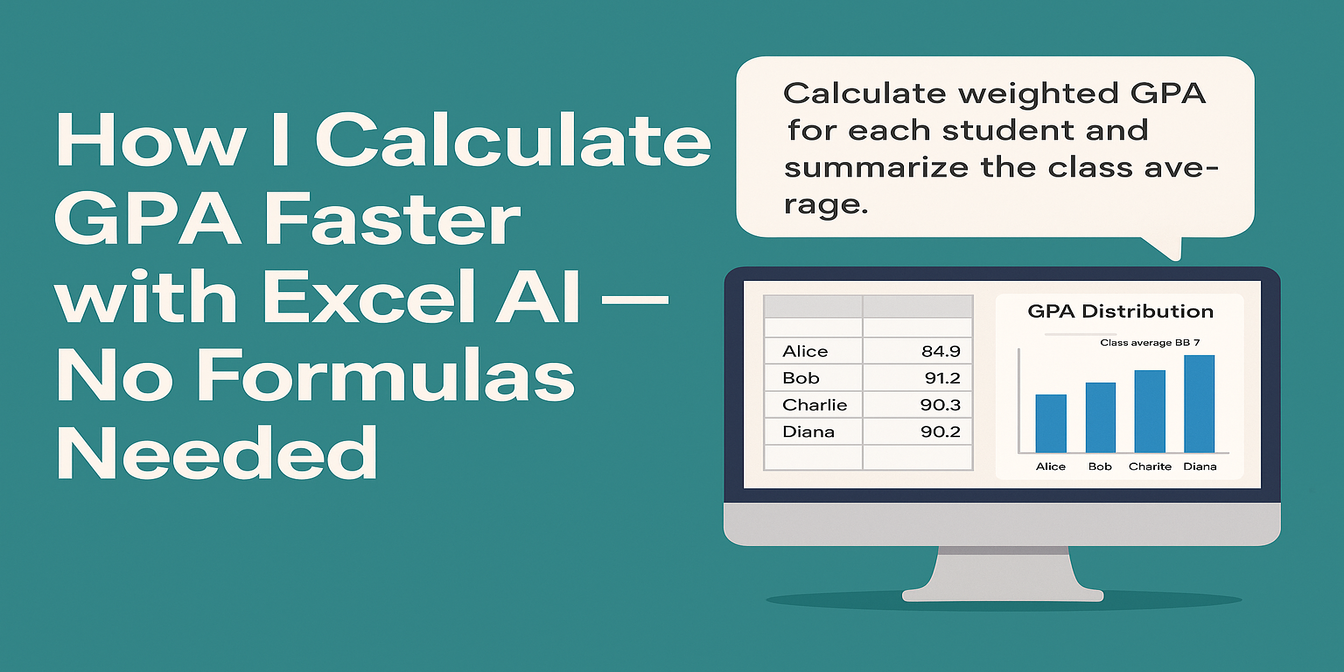 AI for Excel
AI for ExcelHow I Calculate GPA Faster with Excel AI — No Formulas Needed
Still calculating GPA manually in Excel? See how AI can clean your data, compute GPA, and create grade charts instantly — no formulas, no stress.
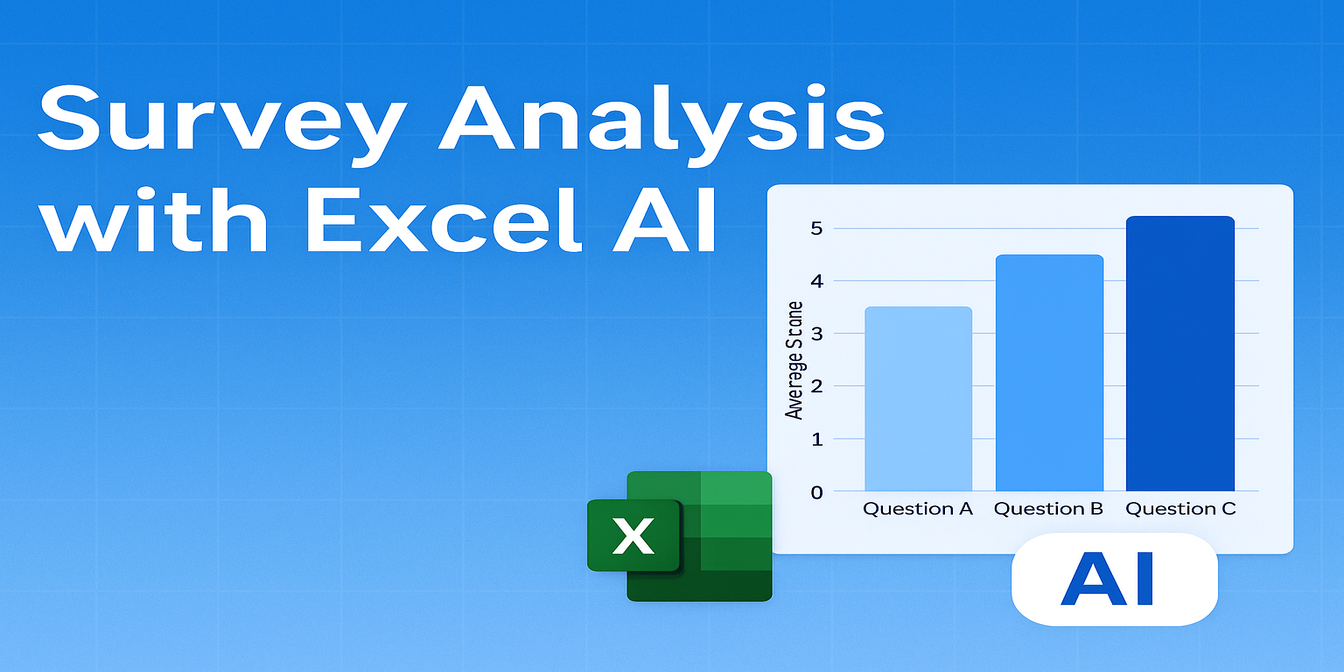 AI for Excel
AI for ExcelHow I Analyze Survey Data Faster with Excel AI — No Formulas Needed
Stop wasting hours on survey analysis. See how Excelmatic helps you clean, calculate, and chart survey data instantly — with just one question.
 Excel Tips
Excel TipsThe Excel AI I Use Every Week (and Why I Dropped Pivot Tables)
Every week, I used to fight with pivot tables. Now I just upload my data to Excelmatic and type a question. Here's how it works.
 Excel Tips
Excel Tips8 Free AI Tools That Make Excel, Charts, and Reporting Easier
These 8 AI tools are free and practical — from cleaning messy spreadsheets to building beautiful charts and summaries.
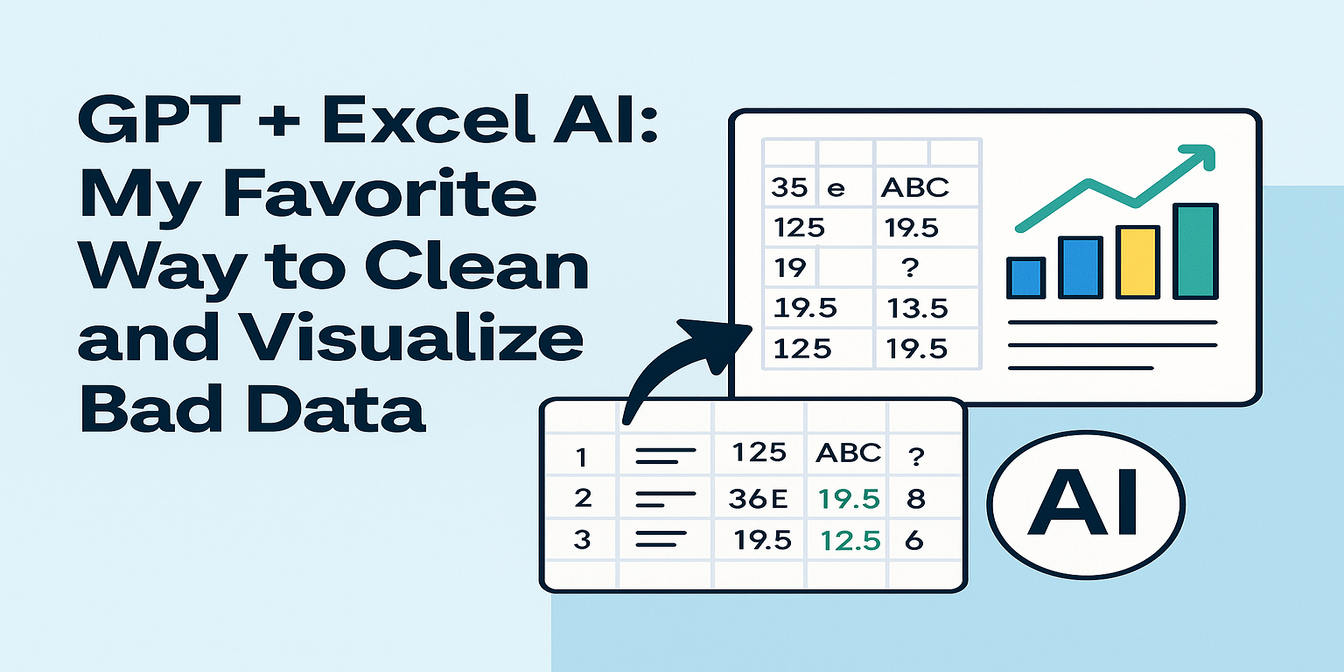 Excel Tips
Excel TipsGPT + Excel AI: My Favorite Way to Clean and Visualize Bad Data
This is my go-to workflow when I get a messy dataset: ChatGPT to clean it, Excelmatic to visualize it. Here's how it works — with real data.
 Excel Tips
Excel TipsFrom Data to Chart in 10 Seconds: Using Excelmatic to Create Charts with AI
Manually creating charts in Excel is overrated. See how Excelmatic turns your spreadsheet into polished charts in just one prompt.
 Excel Tips
Excel TipsNo Copilot? Try These Free Excel AI Tools Instead
Can’t access Copilot? Try these 4 free Excel AI tools that simplify your data tasks and help you work smarter.
 Excel Tips
Excel TipsChatGPT + Excel AI = A Productivity Powerhouse? Here’s What You Need to Know
Structure data with ChatGPT, visualize it instantly with Excelmatic. This AI combo can seriously boost your Excel productivity.
 Excel Tips
Excel TipsThe Easiest Way to Make Excel Charts with AI (Free Download Inside)
Say goodbye to complex Excel chart templates. With Excelmatic’s AI, create professional bar, line, and pie charts in seconds using simple prompts—no coding or design experience required.
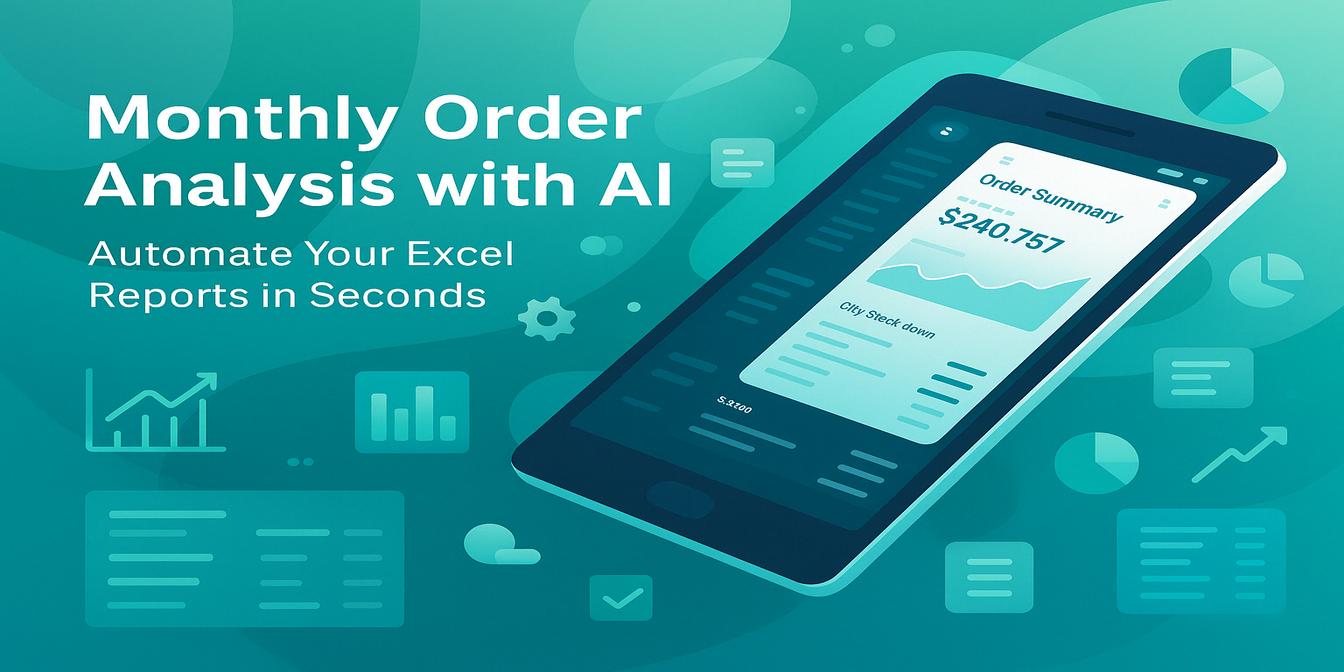 Excel Tips
Excel TipsMonthly Order Analysis Made Easy: Excelmatic AI Report Generator
Automate your monthly Excel order analysis with AI. Excelmatic lets you generate clean reports, visual charts, and summaries using just one sentence—no Excel skills required.
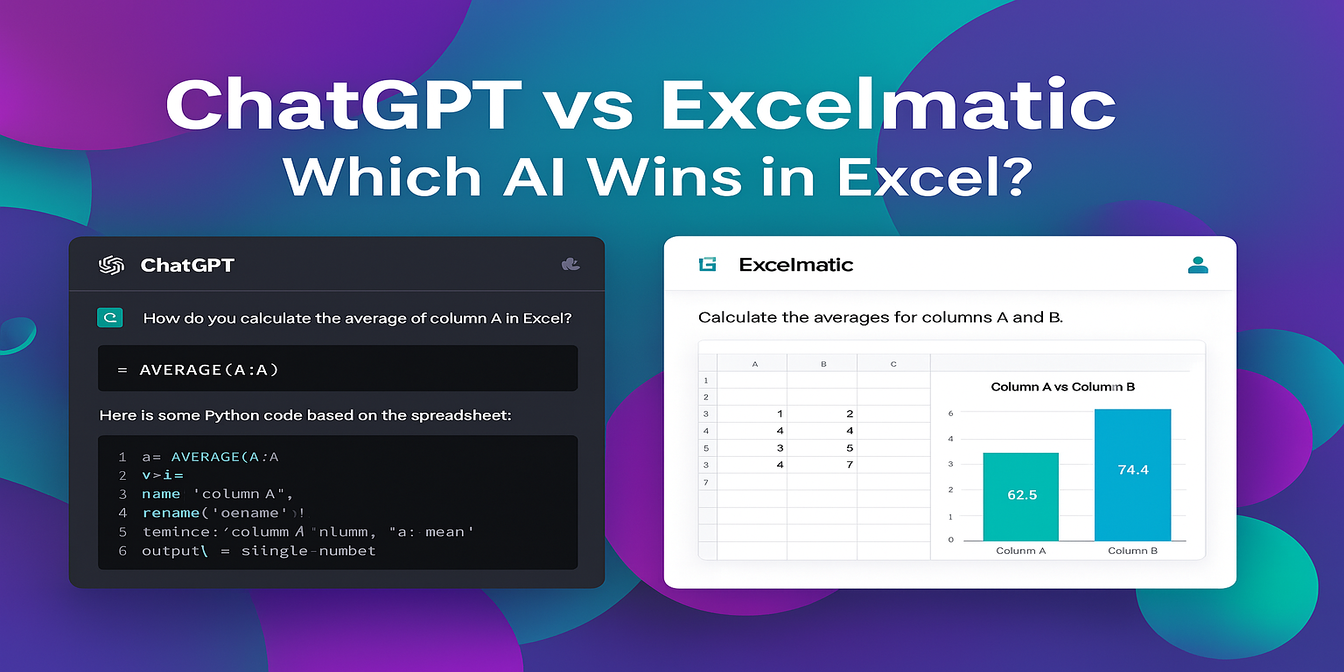 Excel Tips
Excel TipsExcelmatic vs ChatGPT: Which AI Assistant Works Better for Excel Analysis?
Inject super efficiency into Excel with AI: automate repetitive tasks, perform advanced analysis, and easily gain insights through natural language.
 Excel Tips
Excel TipsExcelmatic: The Best AI Grading Assistant for Teachers
With Excelmatic, teachers can analyze student grades, rank performance, and compare classes—all without formulas. Save hours and simplify reporting using natural language prompts.
 Excel Tips
Excel TipsExcel AI Tool: data analysis in 1 second with natural language!
Excel AI tool: data analysis in 1 second with natural language!
 Excel Tips
Excel TipsTop 10 Free AI Tools for Excel to Boost Your Productivity
Discover the top 10 free AI tools for Excel that can boost your productivity and simplify complex tasks.
 Excel Tips
Excel TipsUnleashing the power of AI in Excel: top 10 free and paid Excel AI tools for 2025
Here, we will explore the top 10 Excel AI tools available in 2025, focusing on their features, ideal user base, pros and cons, and pricing.
 Tutorials
TutorialsHow to Calculate Hourly Totals from Daily/Hourly Data Using Excel AI
Learn how to calculate hourly totals from daily/hourly data in Excel using Excelmatic AI. Upload your file, write a simple command, and get results fast!
